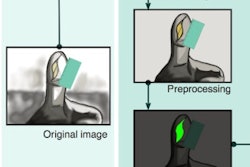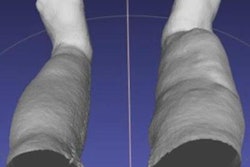Femoroacetabular impingement, or hip impingement, is an abnormality that impedes normal range of motion of the hip. The majority of surgeons who treat the condition heavily base their preoperative plan on static anatomic parameters that are highly variable, which questions the viability of this mode of preparation, Dr. Hamid Bagce, PhD, told AuntMinnie.com. A dynamic model, on the other hand, would allow the simulation of patients' femurs in 3D and display the true extent of bone repair required before the surgery.
In this retrospective study, Bagce and colleagues from Columbia University Medical Center in New York City examined the CT scans of 14 patients with hip impingement who later underwent hip surgery. They developed software to create a virtual dynamic model of each of the individuals' femurs based on the scans.
Through model validity testing, the group confirmed that there was a significant correlation between the maximal hip flexion recorded by virtual versus actual movement. Quantifying the extent of hip impingement through this model enables surgeons to customize hip impingement procedures for their patients, according to the researchers.
"A virtual dynamic model of the hip provides crucial functional quantitative data, allowing for individually tailored surgical planning and ultimately improving patient outcomes," Bagce said.



















